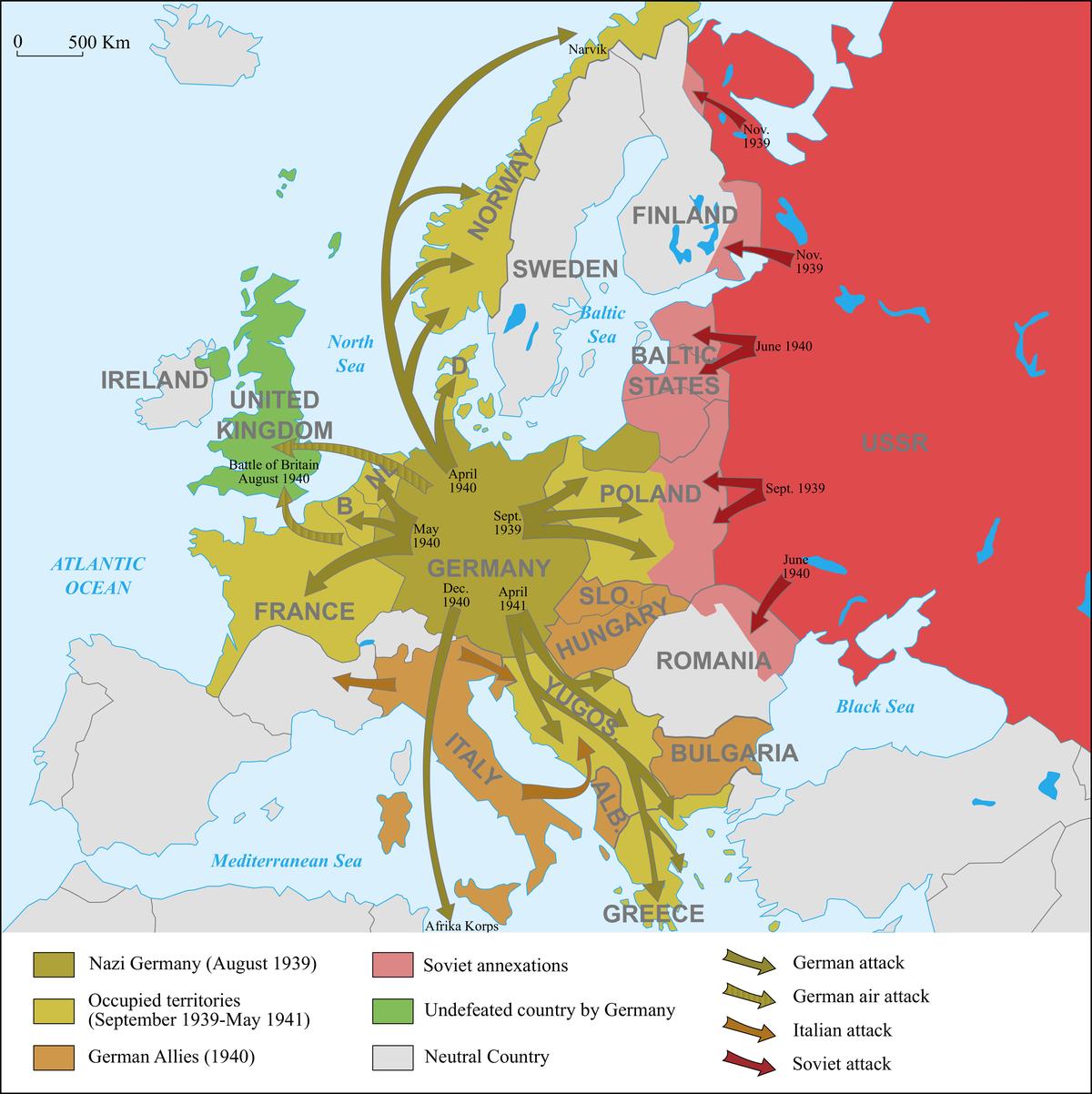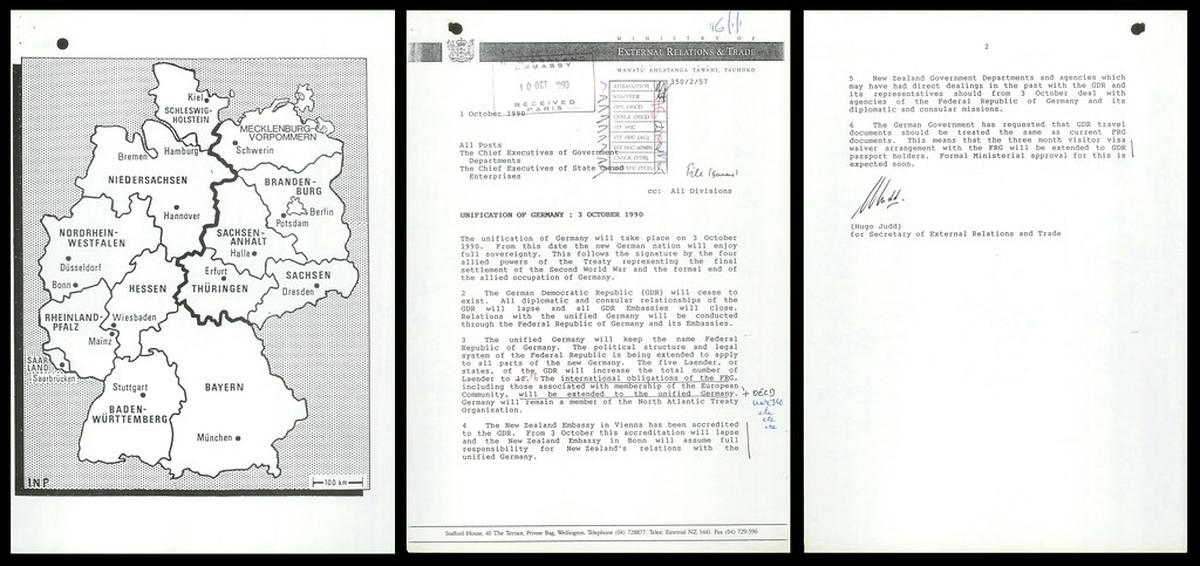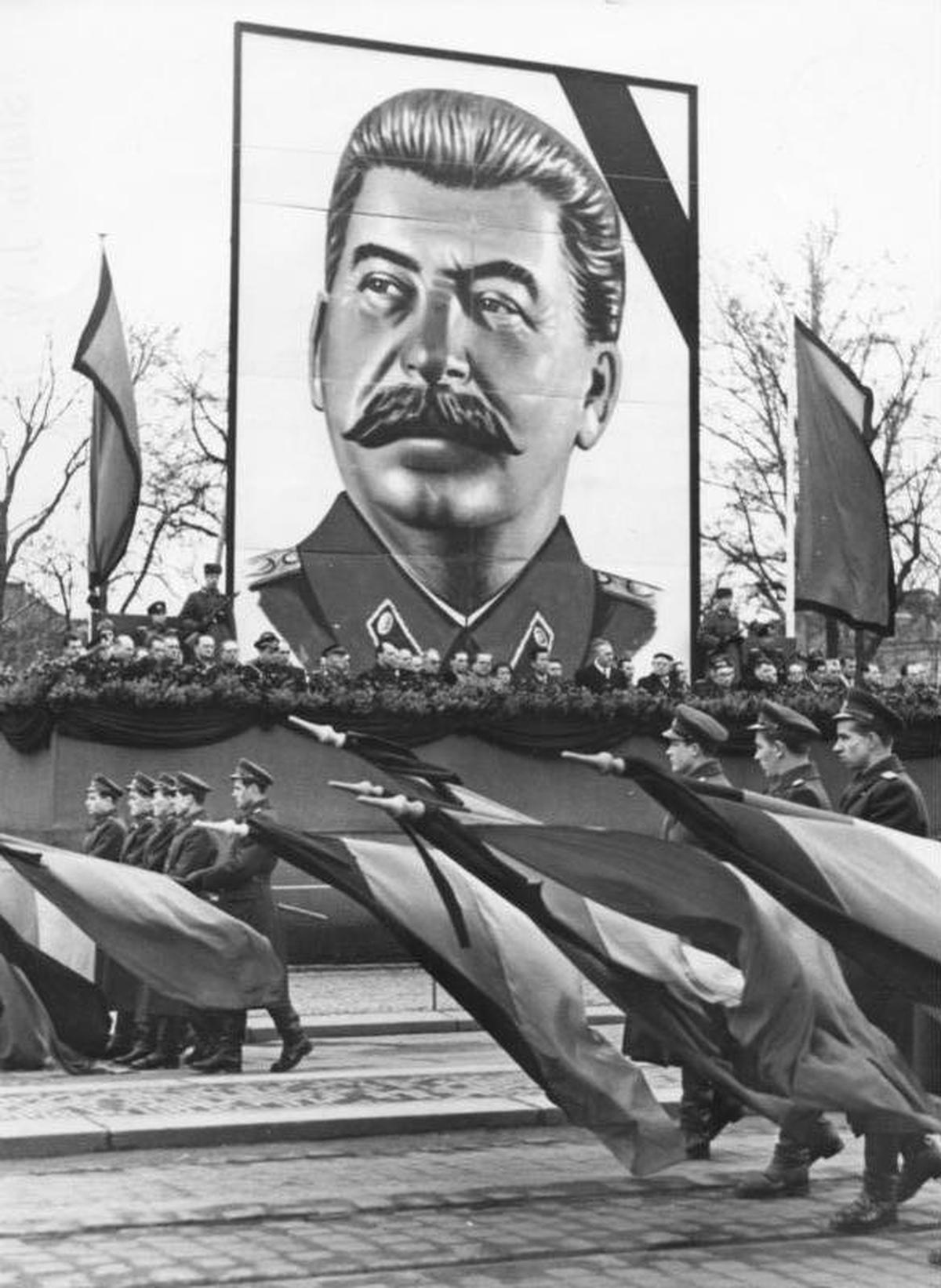File photograph: West Germans rejoice the unification of Berlin over the Berlin Wall throughout the fall of communism in East Berlin on November 12, 1989. November 1999 marks the tenth anniversary of the autumn of the Berlin Wall. The communist authorities of East Germany erected the Berlin Wall in August 1961. The Wall fell after weeks of mass protests towards the federal government on November 9, 1989. The autumn of the Berlin Wall is commonly described because the “finish of the Chilly Warfare.” East German border guards shot 77 individuals who tried to flee to the West over the Wall throughout its existence. | Picture credit score: STEPHEN JAFFE
In 1952, amid the rising tensions of the Chilly Warfare, Soviet chief Joseph Stalin despatched a notice that promised to reconfigure Germany’s future—and, by extension, Europe’s geopolitical panorama. This mysterious communication, referred to as the Stalin Word, proposed the unification of East and West Germany, a prospect that tantalized some and alarmed others. But regardless of its potential to alter the course of historical past, the story of the Stalin Word stays an unfinished chapter, overshadowed by the trail Germany finally took towards reunification a long time later.
Put up-World Warfare II Europe
-
After World Warfare II, Europe was divided into two spheres of affect: the Western Allies, led by the US, on the one hand, and the Soviet Union on the opposite.
-
This break up marked the start of the Chilly Warfare, a interval of intense rivalry and pressure between East and West.
-
Germany was divided into two separate states: West Germany (aligned with the Western Allies) and East Germany (beneath Soviet management).
-
Berlin, the capital, grew to become a robust image of this division, with the notorious Berlin Wall bodily tearing town into East and West.

Map of navy actions in Europe from 1939 to 1941
The significance of German unification
German unification was a vital subject for Europe and symbolized the hope of therapeutic the injuries left by World Warfare II.
The reunification of Germany was a strategic concern for the good powers:
-
The Soviet Union noticed a divided Germany as a buffer zone towards Western affect.
-
The Western Allies feared {that a} unified Germany beneath Soviet management might change the stability of energy in Europe.
Germany’s future was essential, as it could decide the path of postwar Europe, making Stalin’s 1952 notice a possible turning level within the Chilly Warfare.

The correspondence detailed right here is from the New Zealand Embassy in Paris. The correspondence issues how New Zealand would finish relations with the defunct German Democratic Republic, which operated by Vienna. As an alternative, all relations with unified Germany could be performed by the embassy in Bonn. Additionally famous is the truth that East German passports would stay legitimate and vacationers would have the identical visa rights to go to New Zealand as West Germans had beforehand had.
Stalin’s banknote from 1952
Mysterious letter
-
In March 1952, Soviet chief Joseph Stalin despatched a stunning letter to the Western Allies, proposing the unification of East and West Germany right into a single impartial state.
-
The notice instructed that this unified Germany could be free to elect its personal authorities and wouldn’t be a part of any navy alliance, both with the West or with the Soviet bloc.
-
This proposal was surprising and raised many questions amongst Western leaders. Whereas some noticed it as a potential alternative to reunify Germany peacefully, others have been skeptical of Stalin’s intentions.
-
The notice rapidly grew to become a subject of intense debate as leaders questioned whether or not it was a real supply or a strategic transfer by Stalin to realize extra management over Europe.
Historic context
-
Stalin’s 1952 Word got here at a time when the Chilly Warfare was intensifying and Europe was firmly divided between East and West.
-
Stalin’s proposal was in all probability motivated by a number of elements, together with the will to stop West Germany from becoming a member of the Western navy alliance, NATO, which might strengthen Western affect in Europe.
-
The Soviet Union additionally sought to destabilise the Western alliance by providing a seemingly peaceable resolution to the German drawback, presumably within the hope of making divisions amongst Western leaders.
The Western Allies felt that Stalin might have been making an attempt to purchase time, because the Soviet Union was nonetheless recovering from the devastation of World Warfare II and was not but prepared for an additional main battle.

Arms on the border: Information that the eleven-month-long Berlin blockade is to be lifted on Might 12, 1949, results in a handshake between a German policeman from the Jap Sector (left) and his counterpart from the Western Sector on the Soviet-American Sector border in Berlin. A 3rd policeman fortunately flips by a newspaper. PHOTO: THE HINDU ARCHIVES | Picture credit score: ACME PHOTO
Western response
-
Western leaders, notably these in the US and Western Europe, have been deeply suspicious of Stalin’s motives. They feared {that a} unified Germany would possibly fall beneath Soviet affect, which might tip the stability of energy in Europe.
-
America and its allies have been additionally involved that accepting Stalin’s proposal would weaken their place within the Chilly Warfare and undermine the Western navy alliance.
-
After cautious consideration, Western leaders dismissed Stalin’s Word, believing it to be a Soviet ploy reasonably than a real peace supply.
The choice to reject the proposal meant that Germany would stay divided for a number of extra a long time, because the Chilly Warfare continued to find out the way forward for Europe.

Members of the Individuals’s Police quartered in Dresden decrease their flags. 200,000 residents of Dresden marched in silence previous the portrait of Stalin on the Memorial of the Soviet Military on Unity Sq. on March 9, 1953. | Picture credit score: Höhne, Erich; Pohl, Erich
The unfinished story
The rejection of Stalin’s 1952 notice had a profound impression on the course of German historical past. By rejecting the proposal, the division between East and West Germany was cemented, and the nation remained divided for almost 4 extra a long time.
-
This division grew to become a central battlefield of the Chilly Warfare, with each side fortifying their positions in Germany and deepening the East-West divide.
-
The failure to grab the chance for early unification meant that the German folks continued to stay in a divided nation, with the Berlin Wall a stark reminder of the ideological battle between the superpowers.
It was not till 1989, with the autumn of the Berlin Wall and the next collapse of the Soviet Union, that Germany lastly achieved unification, beneath very completely different circumstances than these proposed in 1952.
Persistent Questions
-
Stalin’s notice stays one of many nice mysteries of Chilly Warfare historical past. Historians nonetheless debate whether or not Stalin’s proposal was a real supply or a crafty tactic designed to govern the West.
-
Some marvel what would have occurred if Western leaders had accepted the notice. Would it not have led to a peaceable reunification of Germany and, presumably, a much less tense Chilly Warfare?
-
Others wonder if Stalin had ulterior motives, corresponding to making a unified Germany beneath Soviet affect, which could have modified the stability of energy in Europe.
These unanswered questions hold the story of Stalin’s 1952 Word alive, leaving us to ponder the various “what ifs” of historical past and the way a single determination can alter the course of countries.
Though Stalin’s Word didn’t result in German reunification, it left an enduring mark on European historical past and geopolitics. It symbolizes the deep East-West divide that endured all through the Chilly Warfare and the missed alternative for early unification.
Reflecting on Stalin’s 1952 notice, we’re reminded that historical past is stuffed with “what ifs”: small moments that would have altered the course of countries.
Revealed – September 15, 2024 12:00 pm IST




